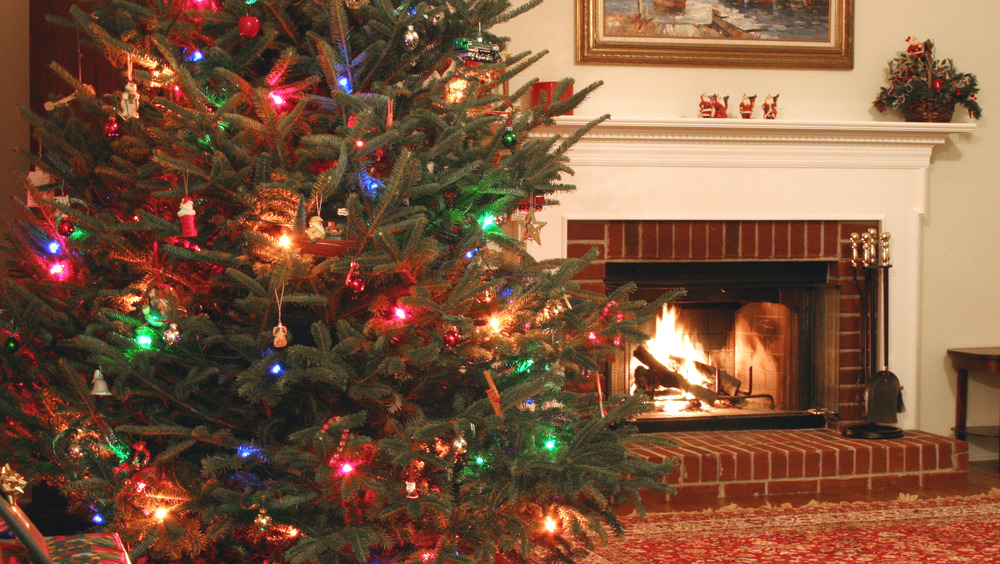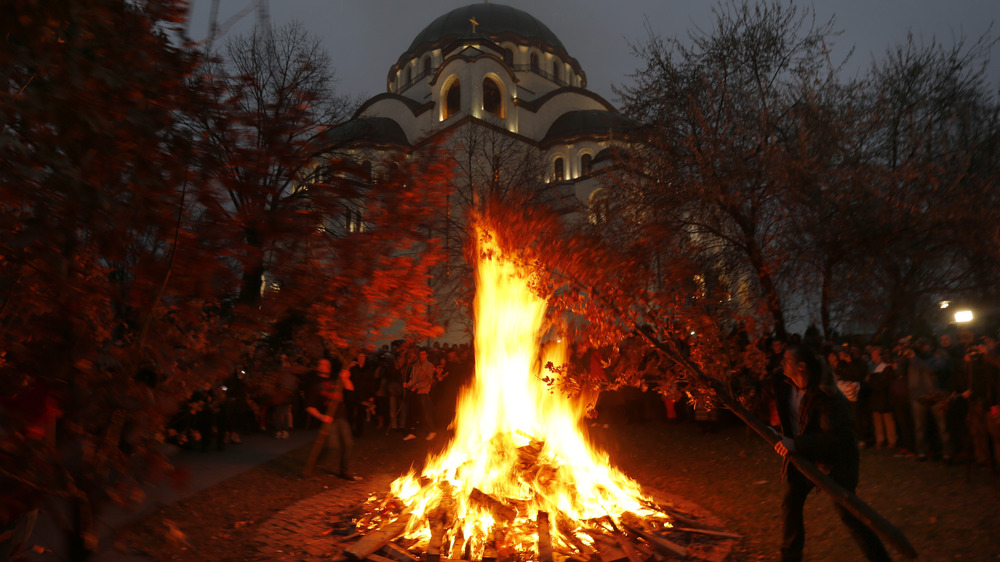The History Of Yule Logs Explained
As the end of the year approaches, the holidays offer an opportunity for people to come together and celebrate traditions with family, friends and loved ones. And as the nights turn longer and colder, the cozy crackling of a Yule log on the hearth can be a particularly warm and welcome part of the Christmas festivities.
Despite its long affiliation with the Christian holiday of Christmas, however, the Yule log actually has its roots in pagan Norse mythology. The tradition originated in Scandinavia, says the Why Christmas website, then spread to the Celtic Brits and Gaelic Europeans, who believed that burning a yule log would bring good luck for the upcoming year.
As far back as the Iron Age, predating the Medieval era, Celts and Gaelic Europeans would gather together to celebrate the winter solstice at the end of December, according to History. The celebrations included feasting and cleansing rituals, the most important of which was the ritual burning of specially anointed and decorated logs. The logs were rubbed with wine or salt and trimmed with pine cones, ivy, and sprigs of holly, and their flames were thought to cleanse the remnants of the old year and usher in a fruitful spring. Once burned, the ashes from the logs were kept as protection against evil and misfortune.
When Christianity came to Europe in the fourth century, many families continued to celebrate the Yule log tradition inside their own homes, turning the pagan ritual into a practice associated with Christmas.
Yule logs have their origins in ancient pagan rituals
The Yule log tradition had many accompanying rules, and failure to adhere to them exactly risked bad luck. For starters, the logs couldn't be purchased; they had to come from the homeowner or a neighbor's land, per Snopes. They also couldn't be handled with unwashed hands, and it was considered especially bad luck if the log did not catch fire on the first attempt to light it.
The Yuletide flame was started from a scrap of the previous year's Yule log, which would have been preserved and stored for safekeeping, most likely under the homeowner's bed, says Quartz. Once the log was lit, it had to keep burning for 12 hours, but could not be stoked for as long as anyone remained eating at the Christmas Eve dinner table. After supper, people would gather around the hearth to tell ghost stories and examine the shadows cast on the wall by the flickering flame. According to Snopes, if the storyteller cast a "headless" shadow, they would surely die within the year.
While the Yule log tradition has become somewhat less commonplace in recent years, it has experienced a resurgence with the popularity of videos featuring crackling Yule logs, on websites like YouTube and Netflix. While they might not be started with the remnants of last year's log, the warm camaraderie of gathering with loved ones around the fire — virtual or otherwise — is sure to bring about some Yuletide cheer.

